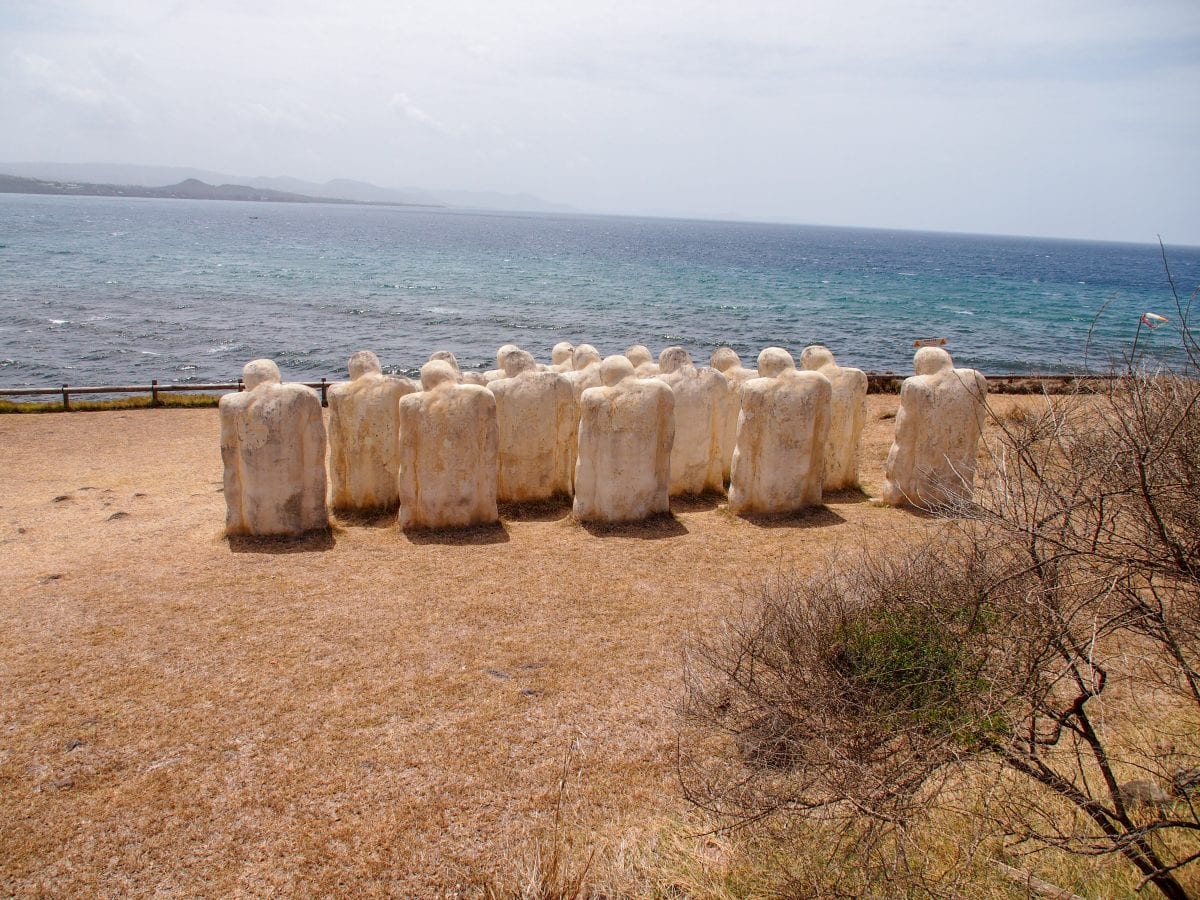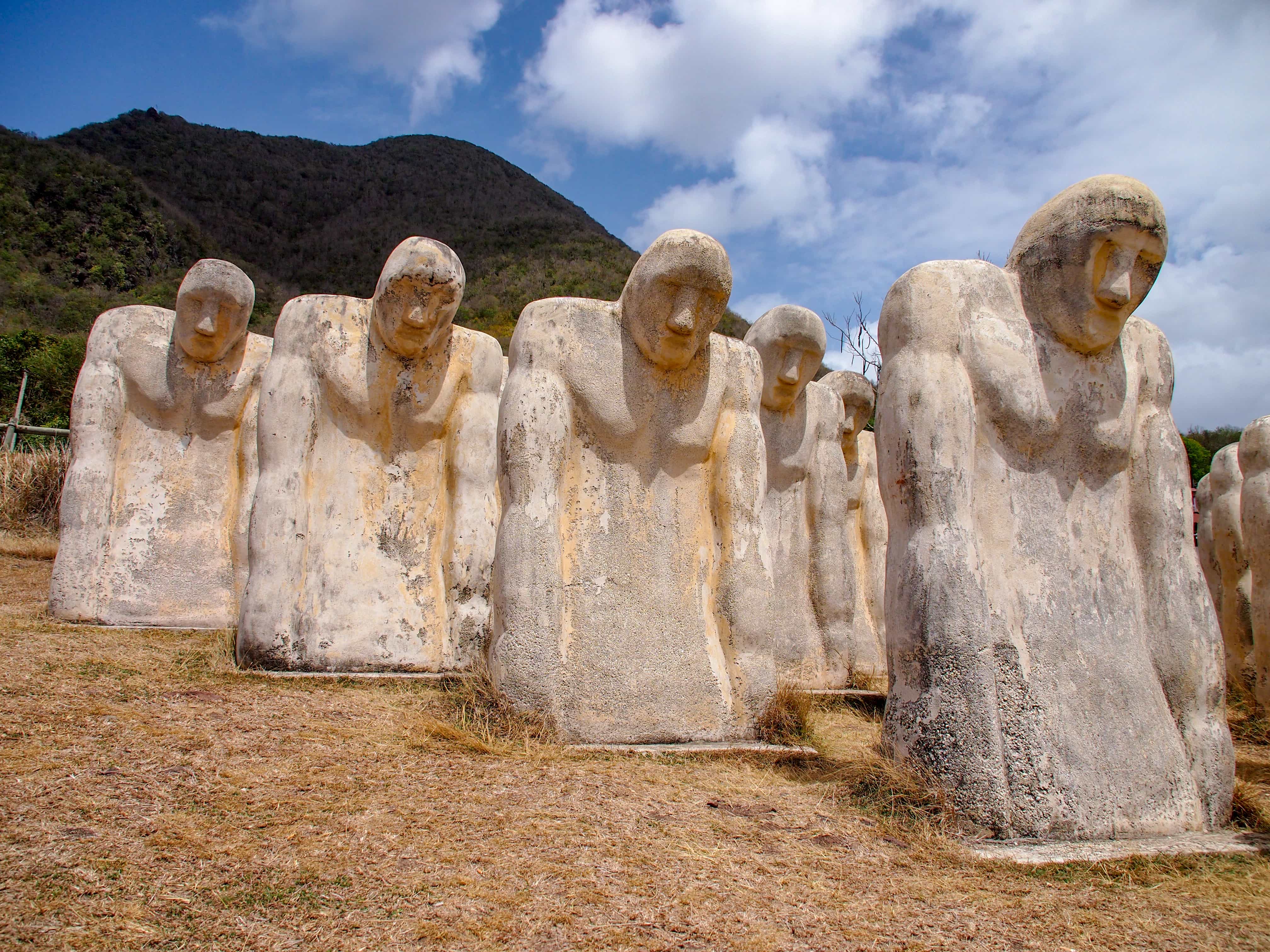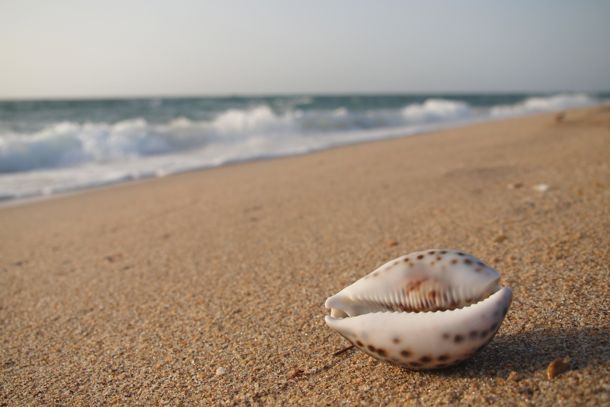Anse Cafard Slave Memorial, Martinique
The legacy of the slave trade is represented in many varying forms at attractions throughout the Caribbean. In some islands, remembrances and memorials are slight and understated. They suggest it’s best to just move on. In more culturally rich islands like Martinique, however, it’s quite the opposite. Poignant, provocative, and powerfully moving, the collection of slave memorials here testify to the evils of slavery with a quiet dignity born of personal heartfelt artistic expression. Among the most moving of these attractions is the Anse Cafard Slave Memorial.

What is the Anse Cafard Slave Memorial
The Anse Cafard Slave Memorial is the masterwork of famed Martinican sculptor Laurent Valére. It was completed in 1998 to commemorate the 150th anniversary of emancipation in the French West Indies. The Memorial is comprised of 15 statues made of cast concrete and sand. They’re arranged in a triangle in reference to the triangular trade and stand at an angle of 110º, directly in line with the Gulf of Guinea. Each statue stands eight feet tall. These are large, hulking figures bearing stoic, brooding expressions. Shoulders hunched and heads bowed, the figures stare out to sea from what is an otherwise peaceful and breezy field.

It’s beautiful, but there’s also an unmistakable sense of loss and mourning here in line with the infamous story that inspired its creation.
Ode To Tragedy
It was illegal to import new slaves into the Caribbean as of 1815. That, however, did not stop the illicit trade from continuing years later. To circumvent the law, traders simply ported their ships at night. This, predictably, often yielded tragic results…
On the night of April 7, 1830, a slave ship sank in the rocky waters off the coast of Le Diamant near Diamond Rock. More than 40 would-be slaves, shackled together in the ship’s hull, drowned.

Meaningful, Moving Anse Cafard Slave Memorial
Visiting the Memorial de l’Anse Caffard is an extremely moving experience. Art installations in most museums and public places are cordoned off, keeping you at a distance from the works. That, however, is not the case here. There are no gates, no velvet ropes, no guards. Nothing stands between you and the statues.
Walk right up to them. Touch them. Sit among them staring out to sea as they do while listening to the pounding surf below. Even if you don’t have the slightest appreciation for art or history, it’s impossible not to feel the raw emotion and appreciate this truly special place.



